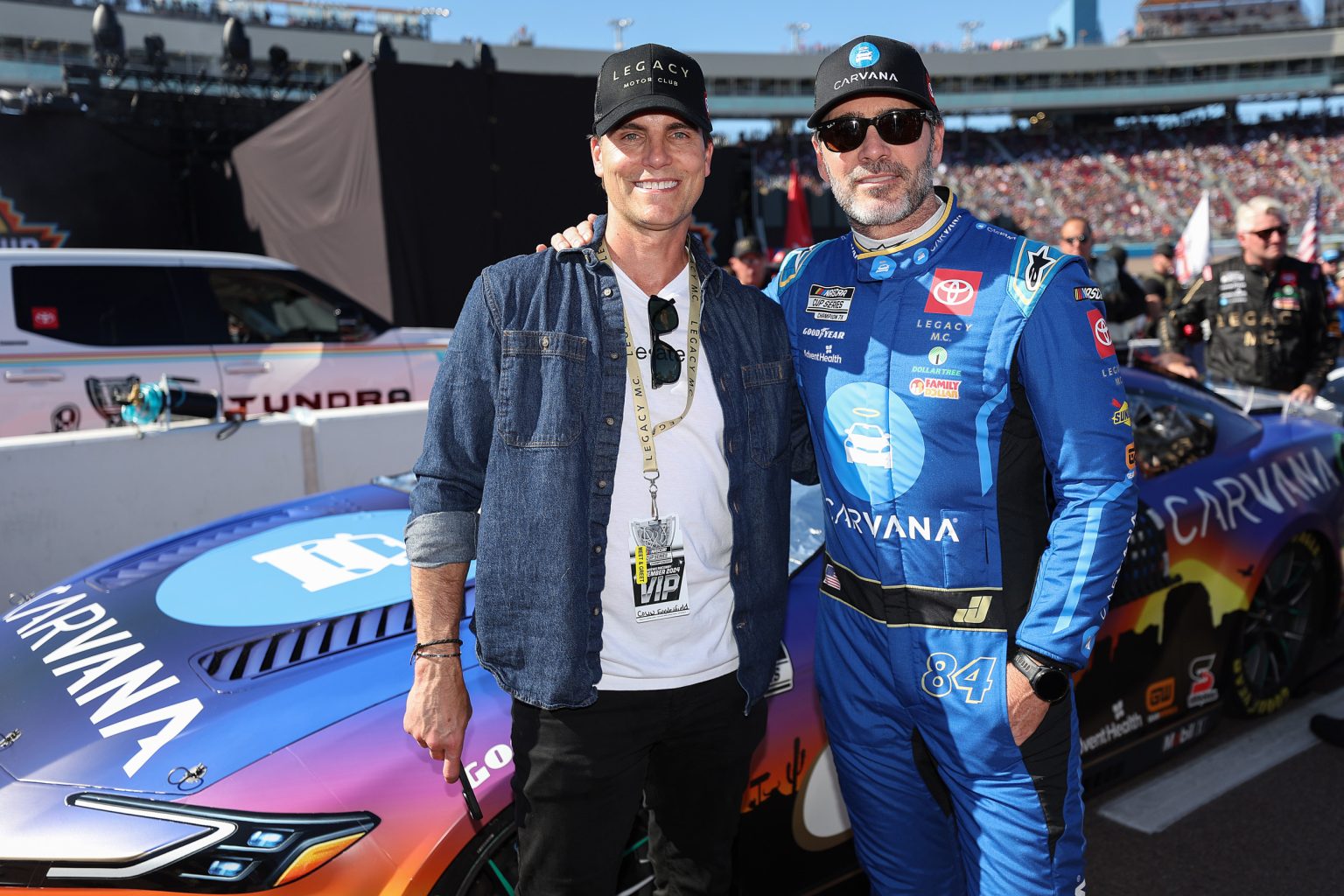Jimmie Johnson, a name synonymous with NASCAR success, embarked on a new and challenging chapter in his racing career when he transitioned from the familiar world of stock cars to the high-speed, open-wheel arena of IndyCar racing. This move, while exciting and fulfilling a personal ambition, brought with it a unique set of challenges, not only on the track but also within his family. Accustomed to the controlled, if still dangerous, environment of NASCAR, Johnson’s wife, Chandra, had to grapple with the heightened risks inherent in IndyCar, particularly on the oval tracks where speeds reach breathtaking levels. This transition highlighted the often-unseen emotional toll that high-stakes motorsport can take on families and the crucial role of support systems in navigating these pressures.
Johnson’s NASCAR legacy is undeniable. Tied with racing icons Richard Petty and Dale Earnhardt for the most Cup Series championships (seven), he dominated the sport for nearly two decades. His journey began in off-road racing, where he honed his skills and amassed an impressive record before making the jump to NASCAR. From 2002 to 2020, he consistently showcased his exceptional talent, accumulating 83 victories and solidifying his place among the sport’s elite. However, the desire for new challenges and the allure of open-wheel racing led him to IndyCar in 2021, a decision that would test not only his driving abilities but also the emotional resilience of his family.
The stark contrast between NASCAR and IndyCar, particularly in terms of safety, became immediately apparent to Chandra. Witnessing her husband navigate the high-banked ovals at speeds exceeding 200 mph proved too much to bear, as evidenced by her reaction at the Texas Motor Speedway. The sheer velocity and the ever-present possibility of a catastrophic incident overwhelmed her, prompting her to leave the grandstands, unable to watch the race unfold. This incident underscored the significant difference in the perceived danger between the two racing disciplines and the emotional burden it placed on those closest to the drivers.
The Texas race was not Chandra’s first encounter with the inherent risks of her husband’s profession. Previous incidents, such as a significant crash at the Indianapolis Motor Speedway, had already exposed her to the fragility of life in motorsport. These experiences understandably fueled her concerns about Johnson’s move to IndyCar, leading to what Johnson described as his “best salesman job ever” to convince her to support his decision. He recognized the validity of her fears and proceeded cautiously, shielding her from the initial oval test sessions to gradually acclimate her to the new reality of his racing pursuits.
Despite her apprehension, Chandra ultimately embraced Johnson’s ambition, recognizing his passion and commitment to the sport. She acknowledged the importance of supporting his dreams, even if it meant confronting her own anxieties about the dangers involved. Johnson’s careful approach, acknowledging her fears and gradually introducing her to the intensity of IndyCar, played a crucial role in earning her support. This delicate balance between pursuing personal ambitions and prioritizing family well-being is a testament to the strength of their relationship and the understanding they share.
Johnson’s story resonates with many who face similar dilemmas in their own lives, balancing passion with responsibility and managing the emotional impact of high-risk professions on their families. The support of loved ones, like Chandra, becomes invaluable in navigating these challenges. While Johnson has since returned to NASCAR in a limited capacity, his foray into IndyCar provided a powerful illustration of the emotional complexities that underpin the world of professional motorsport and the vital role of family in supporting those who dare to push the limits of speed and skill. His experience highlights the human side of racing, reminding us that behind the helmets and the roaring engines are individuals with families who share in the triumphs and anxieties of this demanding sport.

